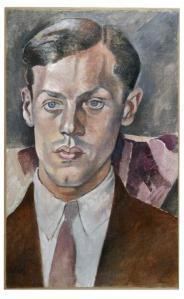Nationality British Name William Chappell Other names Billy Chappell | Years active 1930s – 1970s Siblings Hermina Black Known for Ballet designer | |
 | ||
Full Name William Evelyn Chappell Movies The Trial, Le lac des cygnes Books Beryl, Food and Friends, Studies in Ballet Parents Archie Chappell, Edith Eva Clara Black Similar People Malcolm Williamson, Orson Welles, Edmond Richard | ||
William Chappell (27 September 1907 – 1 January 1994) was a British dancer, ballet designer and director. He is most noted for his designs for more than 40 ballets or revues, including many of the early works of Sir Frederick Ashton and Dame Ninette de Valois.
Contents
- Early life
- Dance
- Design
- Direction
- Libretto and production
- Military service
- Personal life
- Filmography
- References
Early life
Chappell was born in Wolverhampton, the son of theatrical manager Archie Chappell and his wife Edith Eva Clara Black (née Edith Blair-Staples). After his parents separated, Chapell and his mother moved to Balham, London, where she pursued a career as a fashion journalist. Edith's daughter by her first marriage, romantic novelist Hermina Black, Chappell's half-sister, was living nearby in Wandsworth. Chappell studied at the Chelsea School of Art where aged 14 he met fellow students Edward Burra and Barbara Ker-Seymer forging a lifelong friendship.
He did not take up dancing seriously until he was 17 when he studied under Marie Rambert, whom he met through his friend Frederick Ashton.
Dance
For two years Chappell and Ashton toured Europe with Ida Rubenstein's company under the direction of Massine and Nijinska. Chappell returned to London in 1929 to dance with Rambert's Ballet Club (later Ballet Rambert), the Camargo Society and Ninette de Valois's Vic-Wells Ballet becoming one of the founding dancers of British ballet. Throughout the 1930s he created more than 40 roles for Rambert and Vic-Wells including:
Design
His flair as a designer was encouraged by Rambert and for this he is best remembered. In parallel with his dance career he designed more than 40 ballets or revues, including many of the early works of Ashton and de Valois including:
also
His designs for Les Patineurs remained in the repertory and his conception for Les Rendezvous, although frequently revised, continues. He brought his vast experience of ballet design to opera, musical theatre, revues and drama, as both director and designer.
Direction
Chappell has been credited as directing the following productions:
Libretto and production
Military service
At the outbreak of war in 1939, he was the first male dancer to join up, spending the duration of the war as a second lieutenant and entertaining the troops.
In his book Studies in Ballet he describes an occasion in North Africa when his company had no transport and had to march to their destination about eighteen miles away. He used this story to illustrate the benefit of ballet training to legs and feet, allowing a middle-aged man to arrive fresher than men nearly half his age, who had only received the routine Army physical training. He also emphasised the importance of a long unbroken tradition and continuity in the training of male dancers. He was of the opinion that the war was a factor that had caused chaos in the Sadler's Wells Company and rendered valueless years of work. He contrasted the treatment of the ballet in England and in Russia, where male dancers were considered important enough in their work to be kept in it.
Personal life
He was invited by writer and lecturer on dance Peter Brinson to take part in a series of 8 lectures on 'The Ballet in Britain' at Oxford University where he entertained an academic audience with his thoughts on problems of ballet design. Other speakers included Dame Ninette de Valois director of the Royal Ballet, Marie Rambert, Arnold Haskell, William Cole and Douglas Kennedy
He retired to his home in Rye and died there after a long illness.
Filmography
† This was the second broadcast of ballet on British television following the official start of the BBC high definition television service on 2 November 1936.
